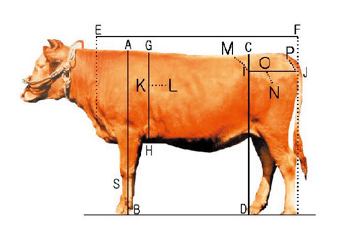Abstract
This Research is a study to predict weight using the scale of Hanwoo test cattle, and it was intended to find out the possibility of weight prediction using information representing the length growth of individuals. The data used for the analysis were bull, steer weight and body measurement at Nonghyup Hanwoo Improvement center, and for multiple regression for weight prediction, each age value and body measurement trait were used as independent variables. Among the original data, the final number of bulls used was 11,414, which has a measurement year of 2000~2020, were used for analysis. and final number of steers was 6,232, which has a measurement year of 1998~2020, were used for analysis. The body measurement traits used in the analysis are wither height (WH), hip height (HH), body length (BL), chest depth (CD), chest width (CW), rump length (RL), rump width (RW), pelvic width (PW), hipbone width (HW), chest girth (CG). As a result of using multiple regression analysis, the adjusted R squared value was 0.7571 for bulls and adjusted R squared value was for steer was 0.8136. This result can be used as basic data when setting up modeling for the development of weight prediction technology using individual image information such as smart farms.
Figures & Tables

Fig. 1. Measurement area for each body measurement in Hanwoo A-B: wither height, C-D: hip height, E-F: body length, G-H: chest depth, K-L: chest width, I-M: rump width, I-J: rump length, N-O: pelvic width, J-P: hipbone width, circumference of G-H : chest girth


